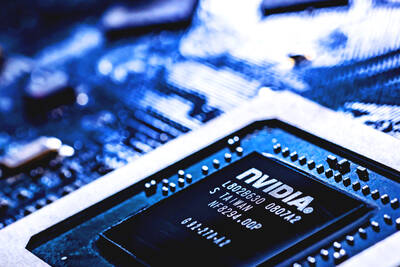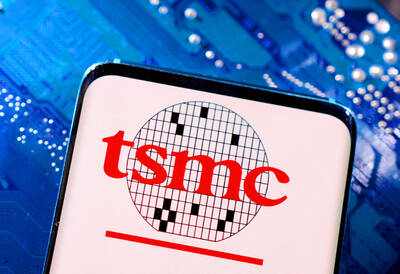Mobile photographers could soon have much better cameras on their cellphones, thanks to technology known as quantum dots.
InVisage Technologies, based in Menlo Park, California, has spent more than three years trying to build a proprietary film that coats the image sensors used in cellphones cameras and allows them to capture more light. The film stands as a rare commercial use of an exotic semiconductor material called a quantum dot.
Jess Lee, the chief executive of InVisage, said the firm’s lab tests had convinced him that within two years cellphones companies would be able to offer cameras that work about four times better than today’s cameras, particularly in low light.
The image sensors in cellphones cameras use silicon to capture light, which is then processed to create a picture. Companies making these sensors have run into problems as they keep shrinking and tweaking the innards of the devices so that they can absorb more light.
The limitations of cameras based on this technology often appear when people try to take photos in low light, resulting in a blurry image.
“With the current techniques, you might have technology that’s 10 percent better two years from now,” Lee said. “The big guys have hit a brick wall, and it will only get harder and more expensive for them to fight it.”
Rather than trying to refine the silicon technology, InVisage turned to quantum dots to build what it calls Quantum Film, a layer of semiconductor material that gathers light better than silicon, Lee said.
Researchers have spent years working on quantum dots with little success. They are essentially semiconductor particles about a nanometer — or a billionth of a meter — in size. Technologists want to control the physical properties of the quantum dots to make them behave a certain way.
Typically, researchers must build the quantum dots with exotic materials and then struggle to control their properties in a repeatable fashion.
Morry Marshall, the vice president for strategic technologies at the chip consulting firm Semico Research, said that if InVisage had figured out how to use quantum dots effectively, it could mean a huge leap in camera performance.
“I don’t know of any technology right now that is even close,” Marshall said.
Lee declined to reveal what materials InVisage had used to build its dot, calling it the company’s secret recipe. He did, however, show off vials of the quantum dots suspended in a liquid. The liquid is spread across the top of an image sensor. Lee expects that companies producing image sensor chips could use the film without substantial changes to their existing equipment.
Rather than licensing the film to companies like Sony, Toshiba or Aptina, InVisage plans to make its own sensors and sell them directly to cellphones companies.
“We expect to start production 18 months from now,” Lee said.
With such technology, the current 3-megapixel camera found in the Apple iPhone could be turned into a 12-megapixel camera that works better in varying light conditions, Lee said.
Ken Salsman, the director of new technologies at Aptina, a major manufacturer of image sensors for cellphones, said silicon-based sensors had proved tough to advance. But he said that Aptina had managed to improve its technology through some novel techniques, and that InVisage might be “in for a very rude surprise.”
Still, Salsman commended InVisage for trying something new in this field.
“I am very excited to see what they’ve got,” he said. “Having a true change in performance never hurt the industry.”

When Lika Megreladze was a child, life in her native western Georgian region of Guria revolved around tea. Her mother worked for decades as a scientist at the Soviet Union’s Institute of Tea and Subtropical Crops in the village of Anaseuli, Georgia, perfecting cultivation methods for a Georgian tea industry that supplied the bulk of the vast communist state’s brews. “When I was a child, this was only my mum’s workplace. Only later I realized that it was something big,” she said. Now, the institute lies abandoned. Yellowed papers are strewn around its decaying corridors, and a statue of Soviet founder Vladimir Lenin

UNIFYING OPPOSITION: Numerous companies have registered complaints over the potential levies, bringing together rival automakers in voicing their reservations US President Donald Trump is readying plans for industry-specific tariffs to kick in alongside his country-by-country duties in two weeks, ramping up his push to reshape the US’ standing in the global trading system by penalizing purchases from abroad. Administration officials could release details of Trump’s planned 50 percent duty on copper in the days before they are set to take effect on Friday next week, a person familiar with the matter said. That is the same date Trump’s “reciprocal” levies on products from more than 100 nations are slated to begin. Trump on Tuesday said that he is likely to impose tariffs

HELPING HAND: Approving the sale of H20s could give China the edge it needs to capture market share and become the global standard, a US representative said The US President Donald Trump administration’s decision allowing Nvidia Corp to resume shipments of its H20 artificial intelligence (AI) chips to China risks bolstering Beijing’s military capabilities and expanding its capacity to compete with the US, the head of the US House Select Committee on Strategic Competition Between the United States and the Chinese Communist Party said. “The H20, which is a cost-effective and powerful AI inference chip, far surpasses China’s indigenous capability and would therefore provide a substantial increase to China’s AI development,” committee chairman John Moolenaar, a Michigan Republican, said on Friday in a letter to US Secretary of

Taiwan Semiconductor Manufacturing Co’s (TSMC, 台積電) market value closed above US$1 trillion for the first time in Taipei last week, with a raised sales forecast driven by robust artificial intelligence (AI) demand. TSMC saw its Taiwanese shares climb to a record high on Friday, a near 50 percent rise from an April low. That has made it the first Asian stock worth more than US$1 trillion, since PetroChina Co (中國石油天然氣) briefly reached the milestone in 2007. As investors turned calm after their aggressive buying on Friday, amid optimism over the chipmaker’s business outlook, TSMC lost 0.43 percent to close at NT$1,150